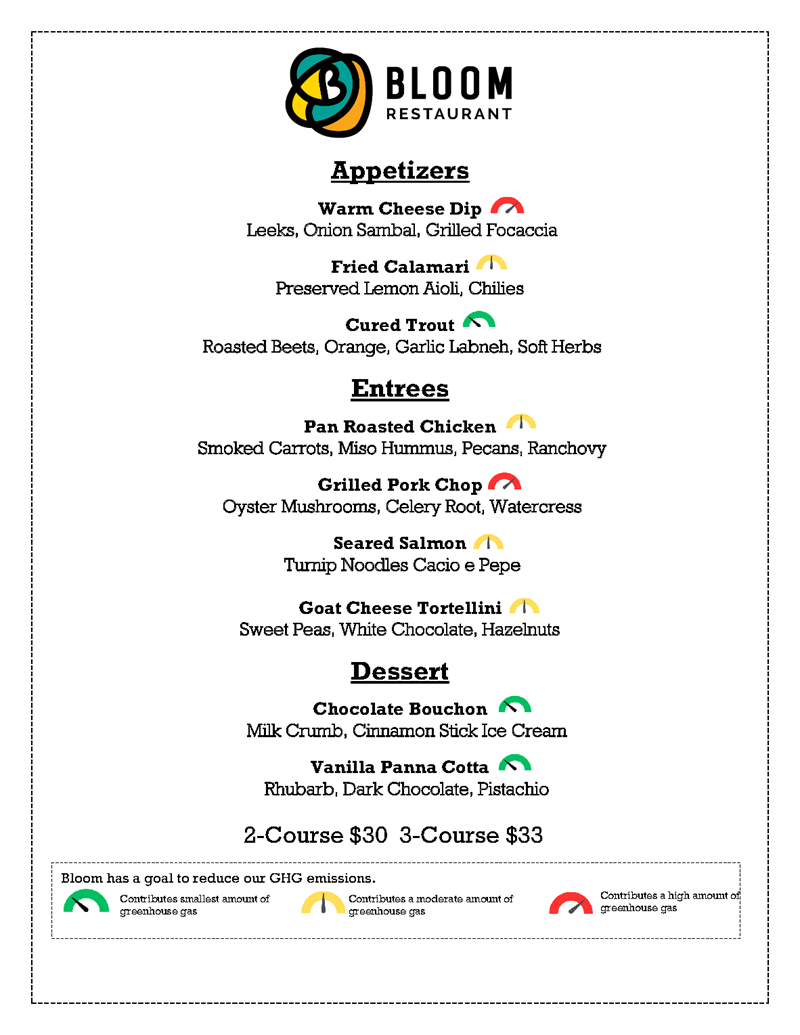Reducing greenhouse gas emissions on the Bloom menu
The production of some food can create more greenhouse gases than others, but being mindful of our food choices is one way each person can reduce their greenhouse gas impact. By understanding the greenhouse gas impact of specific foods, or categories of foods, we can make more sustainable choices. With this knowledge we are working to reduce the greenhouse gas emissions of the meals served at Bloom.
Why is this important?
According to data from Joseph Poore and Thomas Nemecek (2018), food contributes to 26 per cent of total global emissions but there is also a lot of complexity in understanding the greenhouse gas associated with the food we eat.
How we will reduce greenhouse gases
To inform Bloom's impact of menu choice on greenhouse gas emissions, the Living Lab team developed a model used to input current and future recipes to determine ingredient greenhouse gas. The model enables the chef to enter their recipe and understand the associated greenhouse gas as well as understanding the impact of substituting ingredients.
To share this information with customers of Bloom, simple icons were placed beside each menu item, indicating the greenhouse gas contribution of the ingredients. The research team determined the greenhouse gas information on the menu influenced the importance of restaurant patrons’ choices to purchase a plate knowing the item contributed a small, medium, or large amount of emissions.
There is a lot of complexity in understanding the greenhouse gas associated with the food we eat. Our model calculates the greenhouse gas impact of the ingredients used to make the menu items and the associated transportation to Waterloo, where Bloom is located (Scope 3). The model does not currently include Scope 1 and Scope 2 emissions created from the activities of the restaurant and the greenhouse gases associated with energy production.

Green dials contribute the smallest amount of greenhouse gas, yellow dials contribute a moderate amount of greenhouse gas, red dials contribute a high amount of greenhouse gas.
Here’s what you can do as a consumer:
- Make mindful choices when consuming high greenhouse gas producing food categories.
- Understanding the greenhouse gas impact of higher contributing ingredients enables you make decisions that align with your values.
- Prepare or order just enough food to eat (no food waste)
- The disposal of food waste has a greenhouse gas impact, and any food being wasted has already contributed to greenhouse gas through production.
- Eat what is in season locally
- Reduce greenhouse gas associated with transportation
Here’s what you can do as a restauranteur:
- Provide patrons with options with lower greenhouse gas impact.
- Where possible, substitute lower greenhouse gas ingredients (or provide options where possible).
- Use local suppliers where possible to reduce transportation emissions.
- Use food waste audit results to ensure serving sizes are fully consumed.

